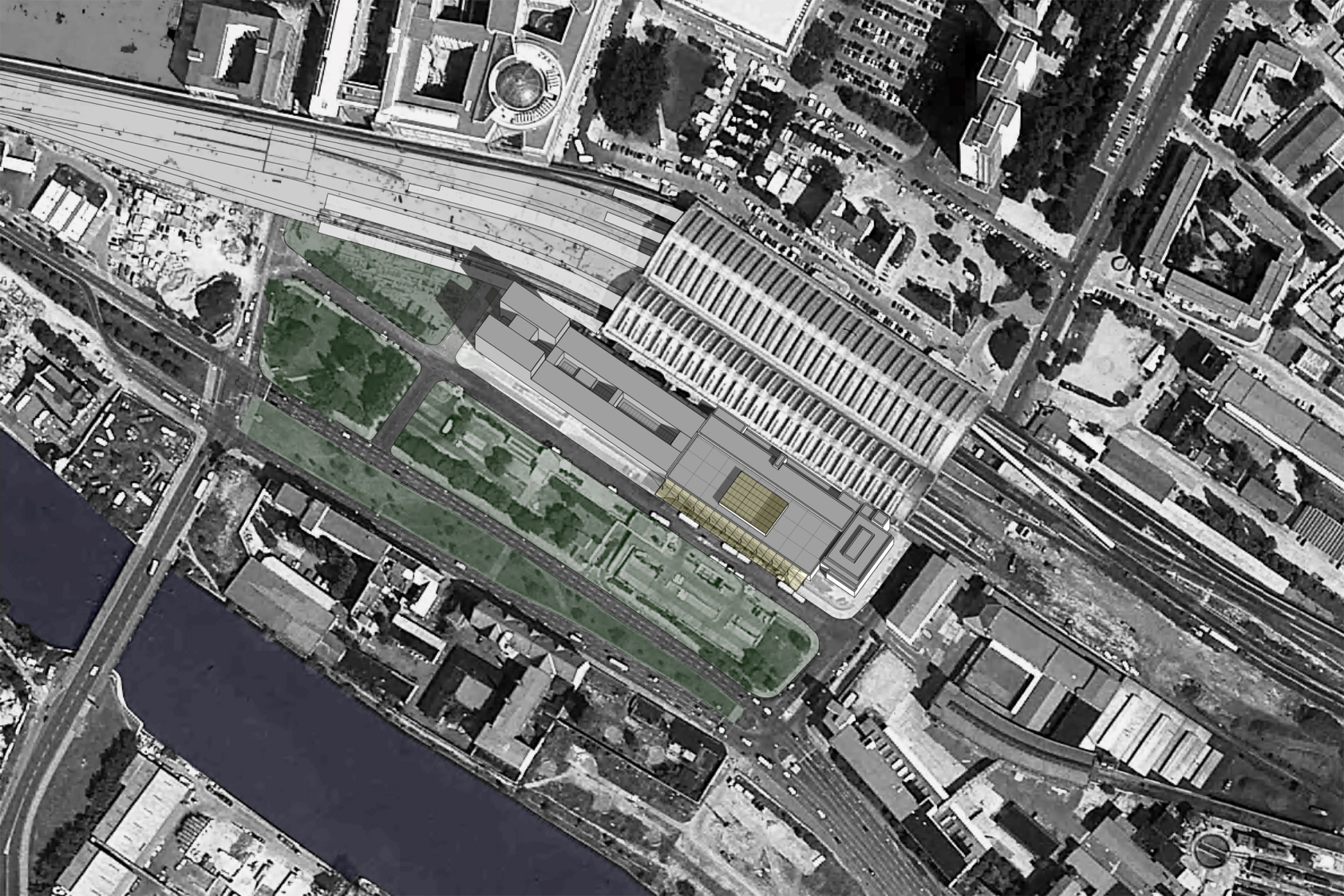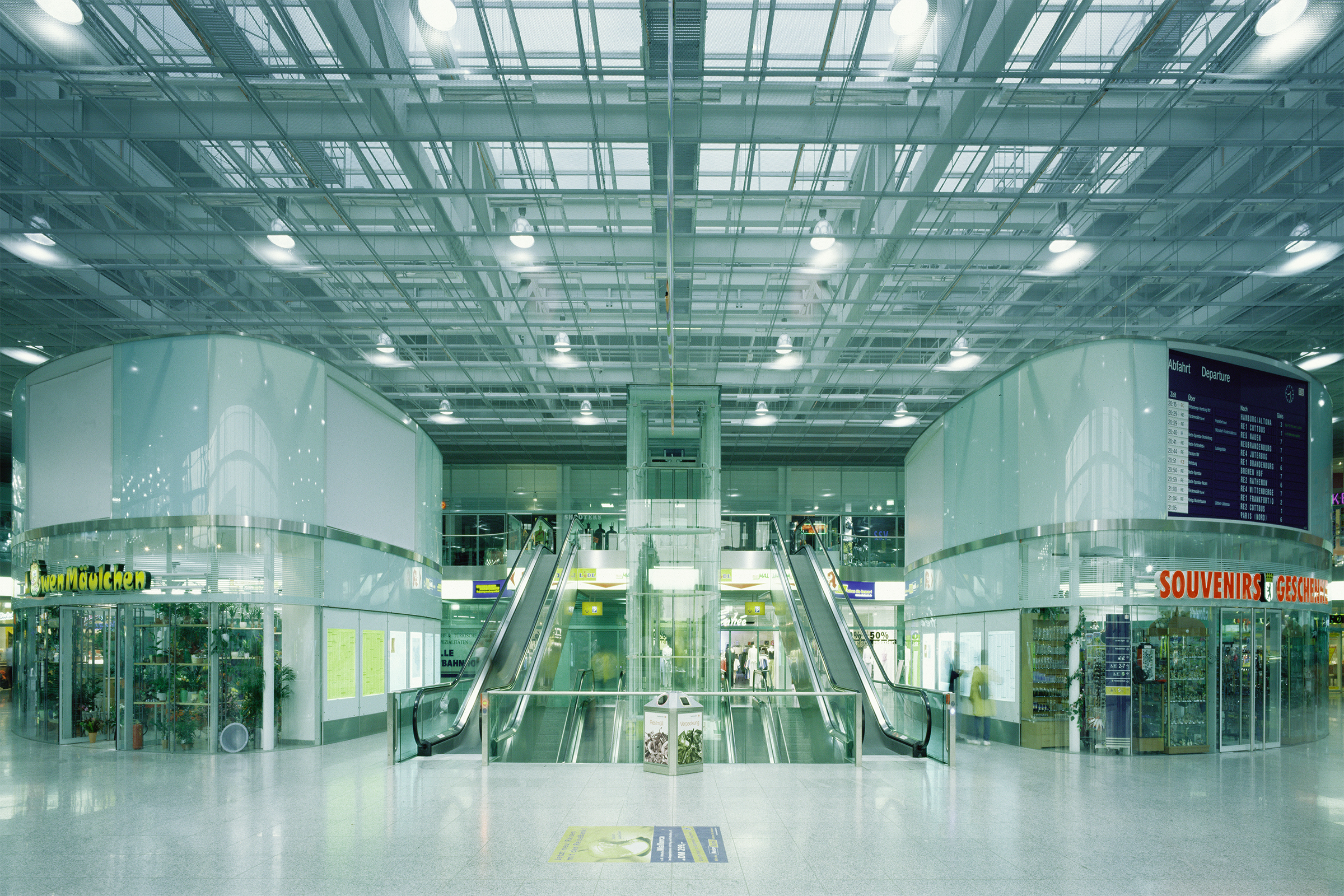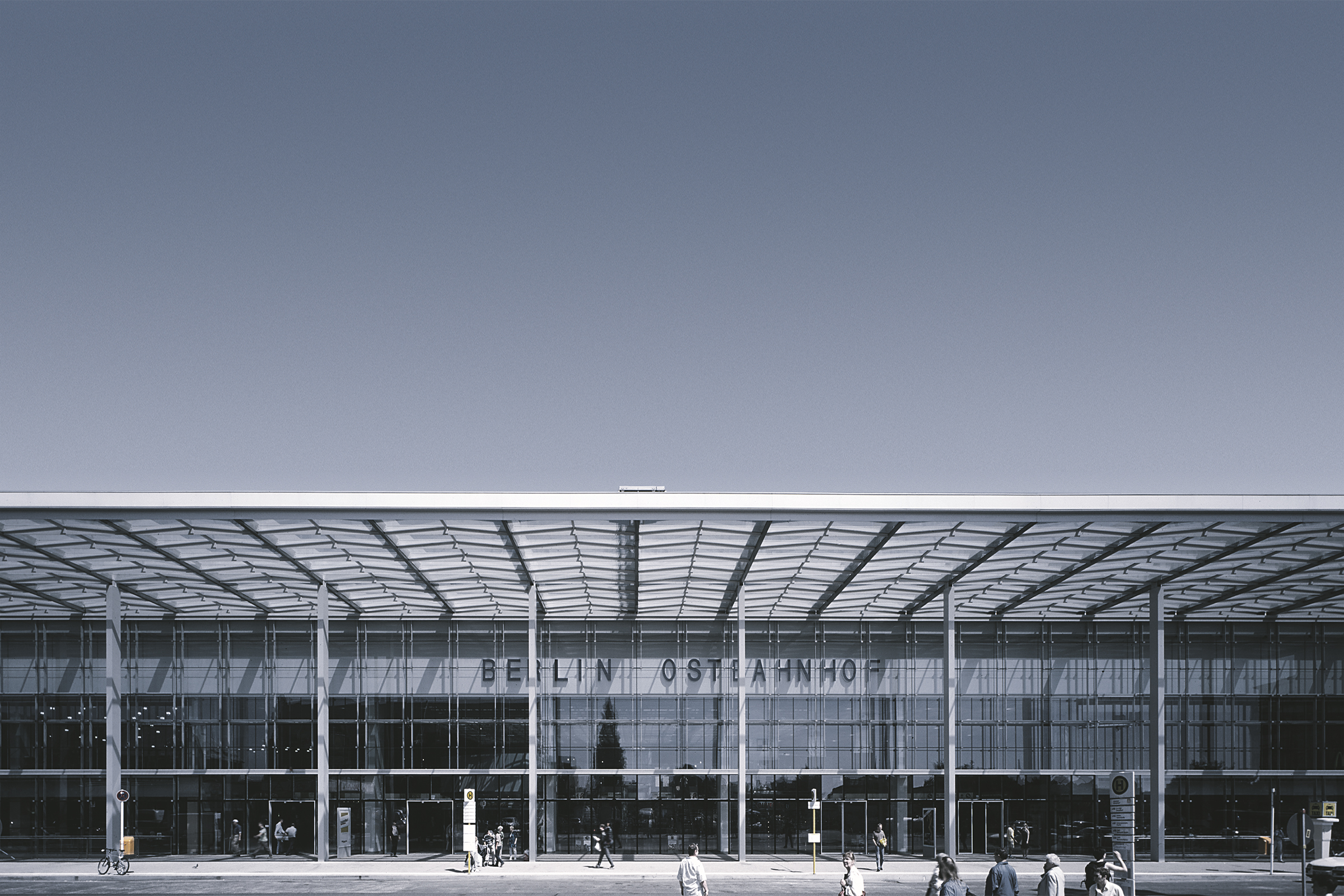Berlin, Germany

Railway stations, harbours and airports have a certain power to awaken emotions in us. The anticipation at the beginning of a journey, the melancholy at the end just like the sorrow when you leave friends, and the happiness when you meet again, can all be evoked already by the image of these buildings.
The traditional railway stations however have also the unfortunate tendency to deteriorate and to take on a seedy and notorious character. We wanted to allow the Berlin Ostbahnhof to once again come out of this image and to welcome travelers with a transparent, clear, and friendly architecture.
First of all, the old station, parallel to the river, was gutted and pared down to its structural elements. The massive and dark brick arches in front of the hall and several additions were demolished and all elements blocking the view from the hall over the river Spree removed. Only the slender supports of the main load-bearing structure and the elegantly curved gallery were preserved and integrated into the new design.
The station interior and an integrated new shopping arcade are amply lit right down to the bottom level through transparent glass façades and a generously glazed roof which improves spatial quality and reduces energy consumption for artificial lighting.
In the middle of the concourse and the crossing point of all traveler flows new escalators and a glazed panorama lift link the individual floor levels and allow for good and instant orientation.
Next to the escalator two eye catching oval objects with shops inside provide large colourful advertising and traveler information. Together with the circulation core, it forms the central reference point of the station hall. The concourse hall is naturally ventilated and not mechanically air-conditioned. The double-glazed south façade facing the river functions like a huge conservatory, keeping the summer heat out and letting solar warmth into the hall in winter. In the summer, heat exchanger units extract heat from the waste air generated in the building and transform it into cold air influx. In the winter, the waste air heat is used for air conditioning the shops. In this way, so that the entire energy cost of the station is cut by roughly 30 per cent. For more than forty years the station was cut off the people by the adjacent Berlin wall which created a vacuum around the station. In the disorder of the surroundings the station today welcomes the traveler with a generous gesture of civility and conveys an image of order, harmony, and clarity.




